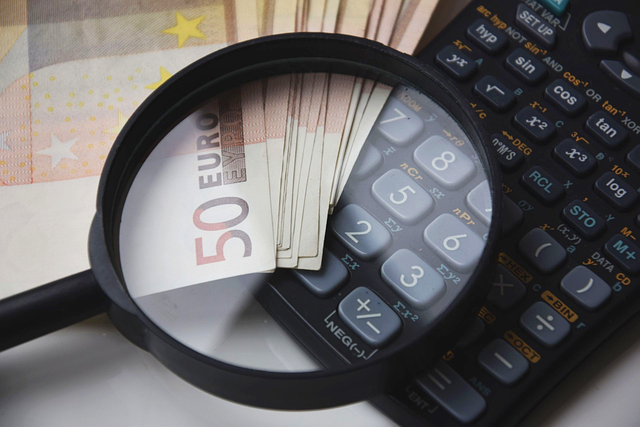How Does XRP Price Increase: Key Drivers & 2025 Outlook
Author: Jameson Richman Expert
Published On: 2025-11-13
Prepared by Jameson Richman and our team of experts with over a decade of experience in cryptocurrency and digital asset analysis. Learn more about us.
How does XRP price increase is a question traders and investors ask repeatedly. This article explains the fundamental, technical, on-chain, and macro drivers that move XRP’s price, shows real-world examples, and gives actionable tactics for traders and long-term holders. You’ll learn what causes sharp rallies and declines, how regulatory and network events matter, how to read the most relevant signals, and where to execute trades safely.

Table of contents
- What is XRP and its supply mechanics
- Main drivers that increase XRP price
- On-chain and market indicators to watch
- Regulation, news, and narrative impacts
- Technical triggers and trading setups
- Practical, risk-managed strategies
- Where to trade XRP (recommended platforms)
- Further reading and trusted resources
What is XRP and its supply mechanics
XRP is the native token of the XRP Ledger (XRPL), designed for fast cross-border value transfers and liquidity provisioning. Unlike mined cryptocurrencies, XRP was pre-mined with a fixed maximum supply of 100 billion tokens. Ripple Labs originally placed a large portion of XRP into an escrow system intended to control circulating supply over time.
Key supply features that matter for price:
- Fixed maximum supply: No inflation via mining — final total is capped at 100 billion.
- Escrow releases: Ripple placed a large tranche of XRP into escrow with scheduled monthly releases (historically 1 billion XRP per month), which Ripple can return to escrow if not used. These scheduled releases affect perceived available supply.
- Transaction cost burn: XRP transaction fees are tiny and a small portion is destroyed with each transaction, but this has a minimal effect on overall supply.
For a concise overview of XRP’s history and technical design, see the XRP Wikipedia page.
XRP (cryptocurrency) — Wikipedia
Main drivers that increase XRP price
XRP price increases when demand grows relative to available supply and liquidity. Below are the most important demand-side and supply-side drivers.
1. Increased real-world usage and adoption
When financial institutions or payment providers use XRP for liquidity (e.g., via on-demand liquidity/ODL corridors), demand for XRP to facilitate settlements rises. Real usage is one of the strongest long-term bullish signals because it creates recurring demand beyond speculative trading.
2. Exchange listings and liquidity
More exchanges listing XRP (especially major global exchanges) increases accessibility and trading volume. Listings on large exchanges or relisting after delistings can create sudden demand spikes because new buyers gain access and market makers increase liquidity.
3. Regulatory clarity
Regulatory outcomes can cause big price moves. Favorable rulings or regulatory clarity reduce investor uncertainty and can unlock demand from institutional buyers who need compliance certainty. Conversely, regulatory crackdowns or delistings reduce demand and push price down.
4. Market sentiment and correlation with Bitcoin and macro
XRP often moves with overall crypto market sentiment. Bull markets in Bitcoin and Ethereum tend to lift altcoins. Macro liquidity conditions (interest rates, risk appetite) also impact crypto flows into XRP.
5. Large holder activity and on-chain concentration
Significant accumulation by whales or Ripple-related wallets can tighten available liquidity and push prices up if buyers outpace sellers. Conversely, large sell-offs can depress price quickly.
6. News, partnerships, and product developments
Announcements of new partnerships, integration into payment rails, or major upgrades to the XRP Ledger can trigger speculative buying and long-term adoption expectations.
7. Token unlocks and escrow management
Escrow release schedules and Ripple’s decisions to sell or return XRP to escrow directly affect circulating supply expectations. Transparency about the use of released XRP reduces panic — uncertainty can depress price even without actual increases in supply.

How these drivers interact — scenarios that push XRP price higher
- Regulatory clarity + exchange relisting: A favorable court ruling or regulation followed by relists on major exchanges can produce a rapid price surge as institutional and retail traders re-enter the market.
- Real-world adoption + liquidity tightness: New ODL corridors being adopted by banks with limited available XRP on exchanges can create buying pressure and push the price up.
- Macro risk-on + market momentum: Bitcoin-led bull runs often propagate to XRP via momentum traders and ETFs or institutional flows into crypto.
On-chain and market indicators to watch
To answer "how does XRP price increase" practically, you should monitor a mix of on-chain, exchange, and market indicators. Below are the most useful and actionable metrics.
Exchange order book and liquidity
- Depth on major exchanges: shallow order books mean modest buy orders can drive large price moves.
- Spot volume and stablecoin flows: rising stablecoin inflows into XRP trading pairs indicate growing buying power.
On-chain activity
- Daily active addresses: increased unique senders/receivers suggests higher real usage.
- Transaction volume (value transferred): higher value moving on XRPL can indicate payment corridor activity.
- Whale transfers: large transfers from exchanges or into cold wallets signal accumulation or potential sell pressure.
Supply signals
- Escrow release announcements and Ripple’s escrow actions
- Exchange reserves: how much XRP exchanges hold — falling reserves can forecast upward pressure
Market sentiment and derivatives
- Funding rates and perpetual futures open interest — high long leverage can accelerate rallies but also create liquidations
- Put/call skew on options markets — tells whether traders are hedging or speculating bullishly
Platforms like CoinGecko, CoinMarketCap, Glassnode, and Santiment provide many of these metrics. For educational context on tracking crypto metrics, see this Santiment overview or Glassnode resources.
Regulation, major legal events, and their impact
Regulation is one of the largest single drivers of price volatility for XRP. Historically, litigation and regulatory actions have caused massive price drops or recoveries because they directly affect the market’s ability to access XRP and offload legal uncertainty.
Key points:
- Uncertainty depresses price: When exchanges delist XRP or institutional buyers exit due to unclear legal status, liquidity and demand drop.
- Favorable rulings improve demand: Clarity that XRP is not a security for certain sale types unlocks institutional and retail demand.
For general background on how regulatory frameworks impact cryptocurrencies broadly, see the U.S. Securities and Exchange Commission (SEC) website and central bank publications on digital assets. An accessible summary is available on the SEC website and academic resources like the Bank for International Settlements (BIS) research on digital currencies.
Bank for International Settlements — CBDC and crypto research

Technical triggers and trading setups that can accelerate price increases
While fundamentals set the stage, technical triggers can cause rapid price acceleration. Traders should use technical analysis in combination with fundamentals and risk management.
Momentum breakouts
A break above resistance with volume confirmation commonly attracts momentum traders and market makers, increasing buy pressure. Watch for gap-ups on high volume and retests of breakout levels.
Moving average crossovers
Crosses of long-term moving averages (e.g., 50-day over 200-day — “golden cross”) often draw institutional and retail attention and can catalyze flows into XRP.
Derivatives-led squeezes
High long leverage in perpetual futures can produce short or long squeezes. A funding rate spike often precedes volatile moves as liquidations amplify price action.
Volume and on-chain confirmation
Always look for rising volume and on-chain metrics aligning with price moves. Price alone without volume often leads to false breakouts.
Real examples and historical lessons
Examples help show how the above drivers match real market reactions:
- Regulatory announcements have produced rapid sell-offs when exchanges delist XRP, reducing accessible liquidity and demand.
- Positive legal developments or relisting news have historically prompted quick recoveries as market participants reassess risk.
- Large on-chain transfers to centralized exchanges often precede price pressure; transfers to cold wallets suggest accumulation and can forecast rallies.
Actionable strategies for traders and investors
Below are practical strategies aligned with different time horizons. Each includes risk-management basics.
Short-term traders
- Trade breakouts with confirmed volume; use tight stop-loss below support to limit risk.
- Monitor funding rates and open interest; avoid being long into extreme positive funding without a hedge.
- Keep position sizes small relative to account and use trailing stops to protect profits during volatile rallies.
Swing traders (days to weeks)
- Combine fundamental events (e.g., news or relisting) with technical setups like retests of breakout zones.
- Scale in: build position in tranches as confirmation appears; scale out during strength.
Long-term investors
- Focus on adoption metrics, escrow transparency, and regulatory clarity. Increase positions on major sell-offs tied to temporary uncertainty if fundamentals remain strong.
- Use dollar-cost averaging (DCA) to smooth purchase costs and reduce timing risk.
Risk management rules
- Never risk more than a small percentage of your capital on a single trade (commonly 1–3%).
- Use stop-losses and position sizing that reflect volatility — XRP can move quickly during news events.
- Diversify across assets; avoid concentration in a single token.

Where to trade XRP — exchanges and safety tips
Choose established, liquid exchanges for better pricing and execution. Consider regulatory jurisdiction and withdrawal reliability. Here are widely used platforms (use the referral links below if you choose to sign up):
- Trade XRP on Binance — high liquidity and multiple trading pairs.
- MEXC — wide altcoin selection and competitive fees.
- Bitget — derivatives and spot trading for XRP.
- Bybit — strong derivatives liquidity and risk tools.
Safety tips:
- Enable two-factor authentication (2FA) and withdrawal whitelist.
- Use hardware wallets for large long-term holdings whenever possible.
- Verify exchange regulatory status in your jurisdiction and check recent exchange reserve transparency.
How to spot a potential XRP price increase early
Combine the following signals rather than relying on a single indicator:
- Rising exchange inflows of stablecoins into XRP pairs combined with falling exchange XRP reserves.
- Large transfers from exchanges to cold wallets signaling accumulation by institutions or whales.
- Public announcements of new institutional corridors, partnerships, or product launches using XRPL.
- Regulatory clarity or relisting news from major exchanges.
- Technical confirmation: breakout above a multi-week resistance on rising volume.
Examples of high-impact news and how to act
Scenario 1 — Favorable regulatory ruling: Expect immediate volatility and increased inflows. Consider buying on dips after the initial pump if volume and on-chain metrics confirm sustained demand.
Scenario 2 — Exchange relisting: Watch order book depth and be ready to enter if liquidity appears gradually and price stabilizes. Beware of initial spikes followed by profit-taking.
Scenario 3 — Announcement of major institutional ODL adoption: This is a structural demand signal — consider longer-term scaling into positions rather than all-in on the first headline.

Tools and resources for monitoring XRP
- On-chain analytics: Glassnode, Santiment — monitor flows and whale activity.
- Exchange data: CoinMarketCap and CoinGecko for volume and liquidity snapshots.
- News aggregators and project feeds: follow Ripple’s official blog and community channels for authentic updates.
- Trading signal services and group channels: use vetted sources — beware of scams. For examples of market commentary and Bitcoin pricing context, you can read live coverage and trading analysis on CryptoTradeSignals (see related links below).
Related reading and practical trading guides
For live crypto price context and trading signals that often move the broader crypto market (including altcoins such as XRP), check these guides and market resources:
- Bitcoin share price today in India — live rates & trading analysis
- Bitcoin live value in USDT — real-time guide & trading tips
- Find BTC/USD signals — Telegram links, top groups & safety tips
- Where is Bybit restricted in 2025 — crypto regulations analysis
Example watchlist to track daily
Create a daily checklist to catch early signs of price movement:
- Exchange order book depth for major XRP pairs (XRP/USDT, XRP/BTC, XRP/USD).
- Stablecoin inflows into exchanges and XRP pair volume.
- Top whale transfers and exchange reserve changes.
- Relevant news: regulatory developments, relistings, partnerships.
- Funding rates and derivatives open interest on major platforms.

Why "how does XRP price increase" matters for different investors
Understanding the mechanics behind price increases helps different market participants:
- Traders: Identify short-term catalysts and technical triggers to time entries/exits.
- Long-term investors: Separate temporary noise from structural adoption trends.
- Institutions: Assess liquidity availability, regulation, and custody options for allocation decisions.
Final checklist before taking a position
- Confirm regulatory status in your jurisdiction and exchange accessibility.
- Verify liquidity and slippage on your chosen exchange.
- Set a risk plan: entry points, stop-loss, position size, and profit targets.
- Monitor on-chain flows, exchange reserves, and news for sudden changes.
- Use reputable custodial or hardware wallets for long-term storage.
Further high-authority resources
For trustworthy background and legal/regulatory context consult primary and high-authority sources:
- XRP (cryptocurrency) — Wikipedia
- Bank for International Settlements (BIS) — research on digital currencies and central bank implications
- U.S. Securities and Exchange Commission (SEC) — regulatory statements and enforcement actions affecting crypto

Closing thoughts
In short, how does XRP price increase depends on the balance of demand and available supply, shaped by adoption, liquidity, regulatory clarity, whale behavior, and momentum traders. The clearest, sustained price increases usually require a combination of improved fundamentals (real-world usage, partnerships, or regulatory clarity) and market liquidity conditions that amplify buying pressure. Combine on-chain metrics, exchange data, news monitoring, and disciplined technical risk management to identify and act on opportunities while protecting capital.
To start trading or increase your XRP market access, consider regulated and liquid exchanges. If you choose to open accounts, here are sign-up links for popular platforms:
Remember: cryptocurrencies are volatile and speculative. Use sound risk management and rely on reputable sources when making investment decisions.